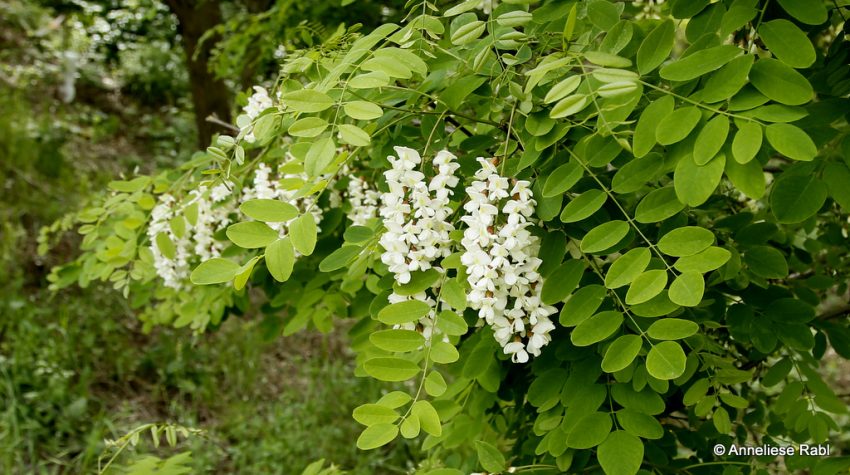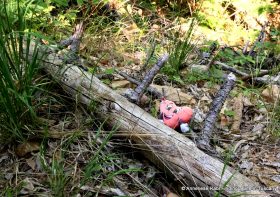Seize the fleeting moment

In Tuscany, from end of April to end of May one can live an unique experience indeed. First of all you must find yourself in the region of Lucca, Pistoia, Massa Carrara or Florence. In the more southern provinces such as Siena or Grosseto the “performance” does not exist because there the main actor is not very widespread. Secondly, you need a fine nose.

I am talking about a tree named Robinia Pseudoacacia or black locust, in Tuscany simply known under the name of “acacia”. When it is flowering, the forests turn into a huge patchwork carpet and natural white tending to yellow seems to take completely over. Even the ground is covered with a thick layer of fallen blossoms. It looks, in fact, as if everything was covered by snow.
Pleasant warmth and well-balanced humidity in the air help the light breezes, not too strong and not too weak, to bring down from the hills a very special, totally unexpected smell. It is not as distinct as the scent of jasmine or linden. They, in fact, will have been caressed by the beams of stronger sun for a longer time. The acacia, after several months of low temperatures, still has to stretch trunk and branches and get back to life. This is why the fragrance is sweet, but still quite weak. Maybe you could describe it with words like vanilla, stewed pears, honey, fresh wax, wild flowers, all mixed together in equal measure. Everything is casual and absolutely unpredictable. An uncatchable fleeting moment which appears and disappears. The only thing you can do is to dive into these handful of magical seconds which satisfy altogether head, heart and soul.
I would have loved the idea that many centuries ago, the acacia tree had done a very very long voyage from distant lands to stop in Italy. The truth is that it has been brought only in the eighteenth century. A larger diffusion took place during the last hundred years. It was very popular and, because of its surprisingly fast growth, perfect for firewood and for filling empty spots in the forests left by dead trees.
Unfortunately, nobody considered that the plant with no specific needs and remarkable adaptability could become invasive and take over the native vegetation. Today, along with 693 species, the acacia is on a list of so called alien plants, brought by humans from outside their place of natural habitat.

Tuscans, who take life as it comes, had noticed that the bees loved the acacia blossoms which, besides, grew in huge quantities. From there the step to making acacia honey was close to hand.
For not much longer than a month, professional beekeepers as well as amateurs place the hives next to extensive acacia forests. Normally, hives show maximum two colors and, in fact, this is exactly what I saw while shooting photos here and there. At a certain point, however, one particular bee colony attracted my attention. The hives had been, in fact, embellished with hand painted bright colored flowers, hearts and stars. I have been told by the owner that bees need geometric signs and shapes to help them finding their home. Together with a well-developed sense of smell (more sensitive even than a dog’s nose) the family reunification goes fast and without any loss.

In every single hive, there are about eight removable combs ready to provide space for up to eighty thousand bees. During this first flowering season of the year they will gather from fifteen to twenty five kilos of delicious honey. The beekeepers check the state of the hives, the combs and the well-being of the insects regularly.

After four or five weeks the performance is over and the families will be moved to another spot. There chestnut trees, erica and all sorts of wild flowers are waiting for the welcome guests. In exchange for the gathering of the nectar, the bees will carry the pollen from flower to flower enabling in this way the development of the seeds. What an ingenious and wise way of Mother Nature to manage this part of her important multiple tasks.

With a little luck, this year again there will be sweet honey, with floral notes, delicate, almost colorless or slightly yellow, like straw.

It may turn slightly cloudy but it will never completely crystallize as often happens with chestnut or wild flower honey. Personally I can neither confirm nor deny because at my house acacia honey simply does not last long enough…











Leave a Reply